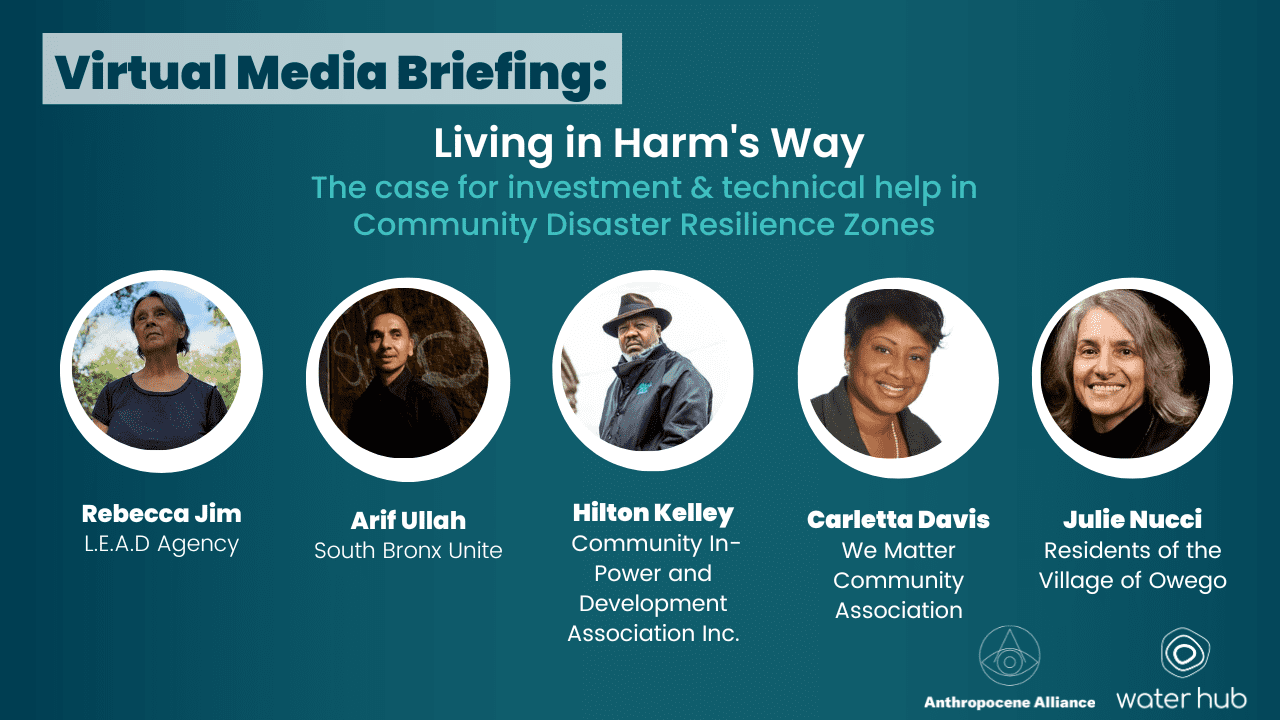“Many of us have set roots there, and we put all of our resources in the property that we have to keep it fixed and repaired, storm after storm after storm, and I do believe that assistance is needed by the federal and state government that helped to maintain us there during the Jim Crow era.”
Hilton Kelley, Community In-Development
Last year, climate disasters forced 2.5 million people to flee their homes, and cost $92.9 billion dollars and nearly 500 lives. But those numbers don’t tell the real story: of elders stuck in their homes with no way to get to safety, families living with mold months and years after storms, memories lost to flooding or fire, and mounting debt due to missed work and out-of-pocket costs.
Something else that tends to be overlooked in the wake of disasters is the way so many communities come together not just for clean-up, but also for preparedness and prevention.
That is why we were so glad to partner with Anthropocene Alliance on March 20 to host a conversation with five local leaders working on resilience in high risk neighborhoods recently designated as “Community Disaster Resilience Zones” (CDRZs).
Moderated by Princeton’s Eric Tate, the conversation touched on the discriminatory zoning and development practices that have put Black and Brown communities in harm’s way, and the opportunity now— with billions in federal climate dollars available— to advance justice in disinvested areas.
These leaders have been working with neighbors, as well as nonprofit, government and university partners to re-envision their communities. They’re planning projects that work with nature to reduce disaster risk while making their neighborhoods healthier and more livable.
Some have already received funding through the Bipartisan Infrastructure Law or Inflation Reduction Act, and their efforts will get another boost from CDRZ designation that allows them to tap targeted federal funding and support.
You can read about these communities and their climate justice work in this transcript or watch the recording. We have also dropped some soundbites below.
Arif Ullah, South Bronx Unite
“The community came together and re-envisioned this waterfront to be a space that could actually contribute to health instead of destroying and compromising health. The community envisioned on this waterfront seven green spaces interconnected by a greenway.”
Hilton Kelley, CIDA
“Let’s work together with nature to create better drainage systems. We can’t just keep pouring concrete and expecting the water to drain or absorb back into the ground when it’s blocked by all the concrete that we pour. We have to build smart. We have to build according to nature, to where nature can work with us on mitigating some of the floodwaters that come into our communities.”
Rebecca Jim, LEAD Agency
“One of the things that we’ve been doing all for many years is advocating for this creek that runs through the town of Miami, Oklahoma. Even though it is really still very dangerous for children, they’ve just rediscovered it, and they are swimming and playing and building and creating joyous opportunities there…Telling people to stay out of a beautiful place is tiresome, and what we really need to do is make it not be dangerous.”
Carletta Davis, We Matter Community Association
“The ultimate goal, again, is to give this community back its natural resource, which is water, which is life. Water is life, right? And to put that in the hands of someone else just really minimizes and diminishes, diminishes this community. And so we want to take that back.”
Julie Nucci, J. Nucci Consulting
“We could wait for the next disaster, wait for everybody’s mental health to be destroyed. Wait for the family photos in your wedding pictures to be gone underwater… Or we can say, let’s take this money and put it in protecting the buildings in the first place, and let’s keep these people healthy and keep the communities healthy.”
